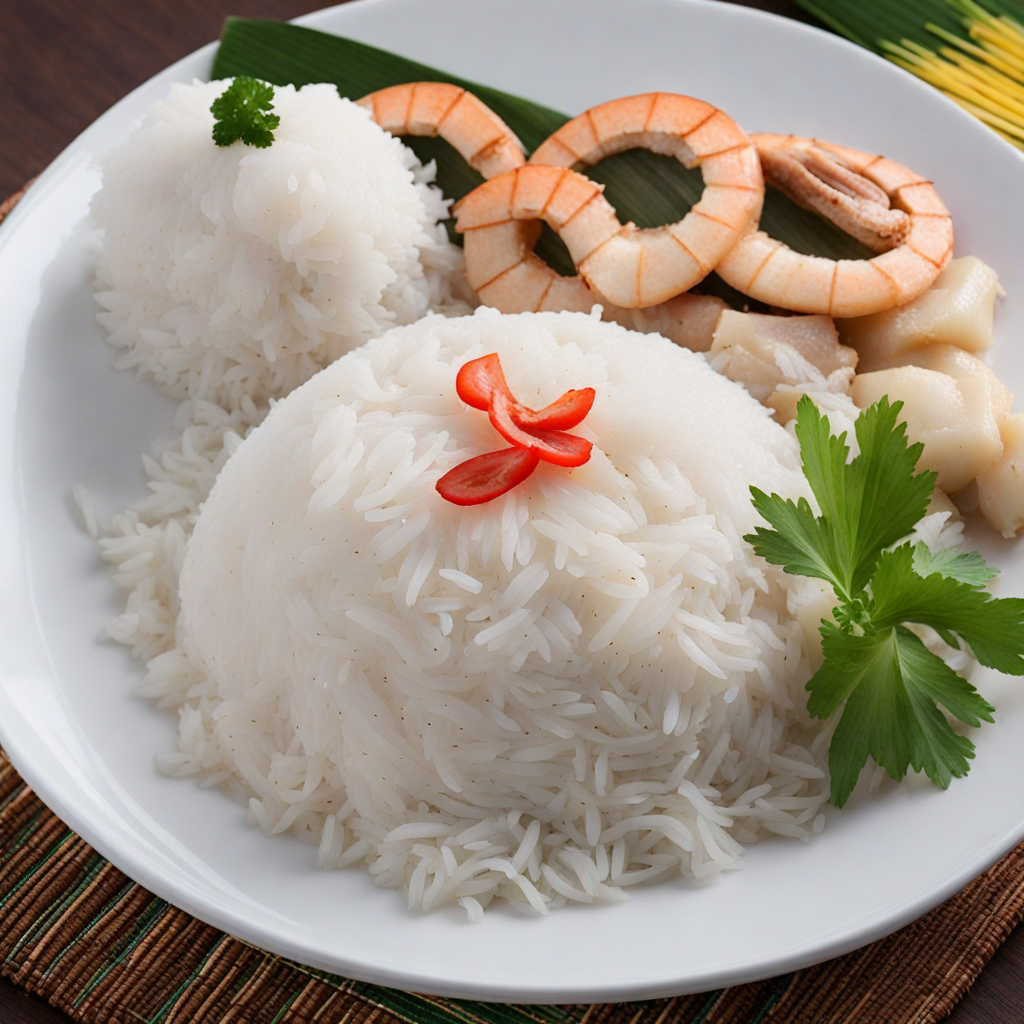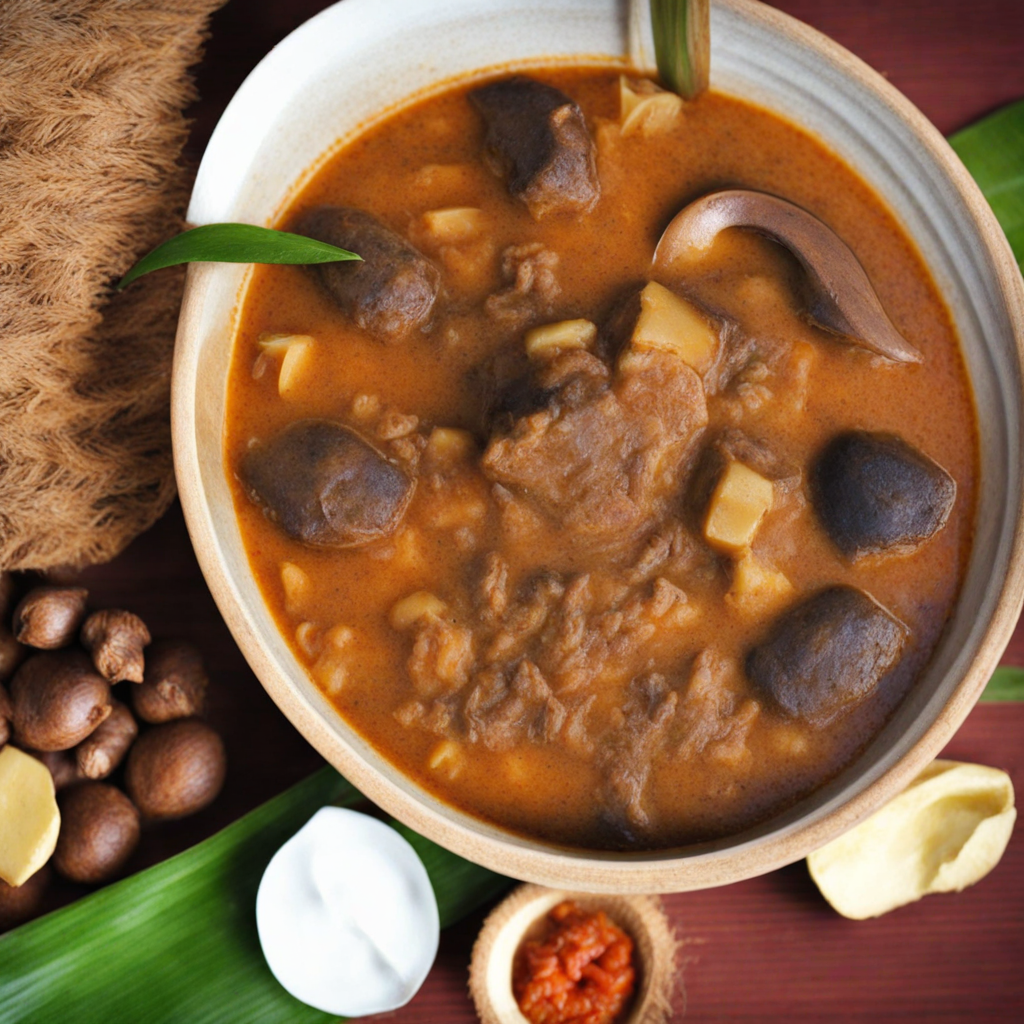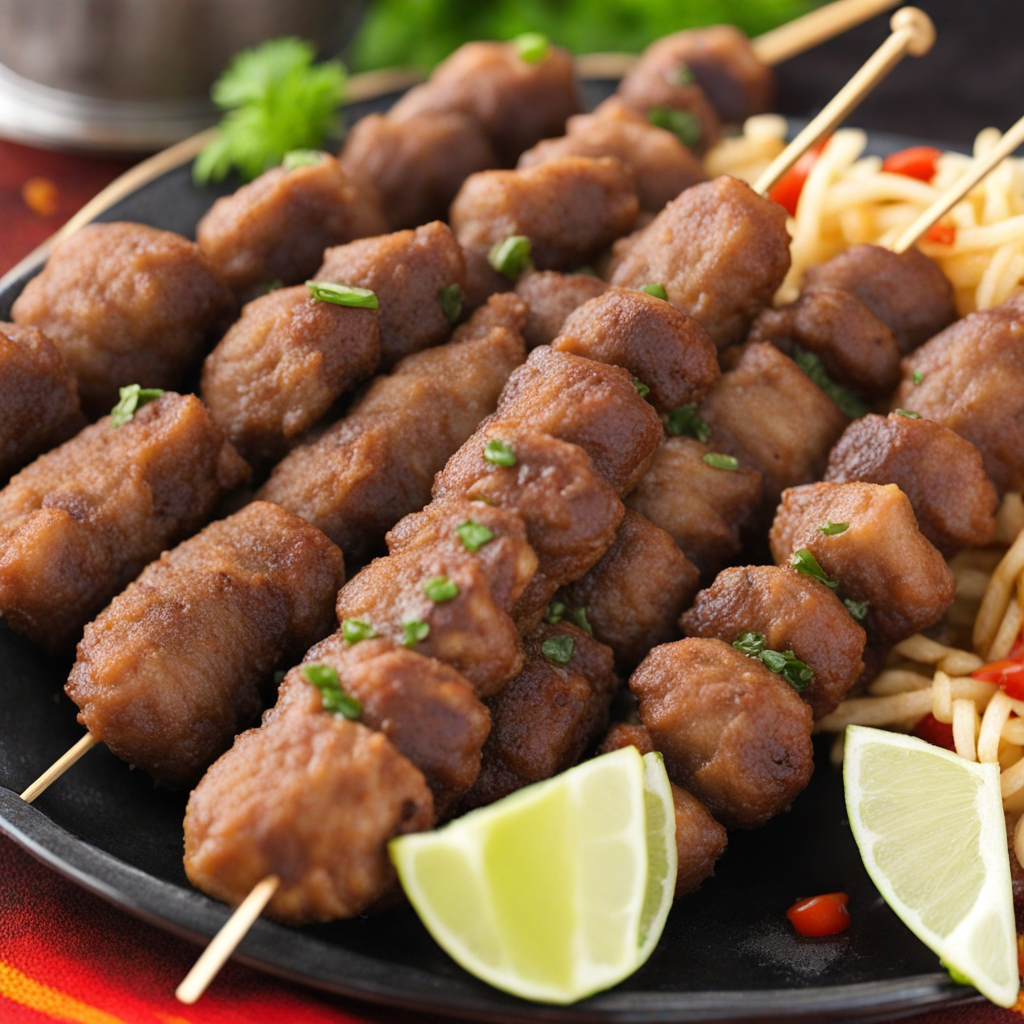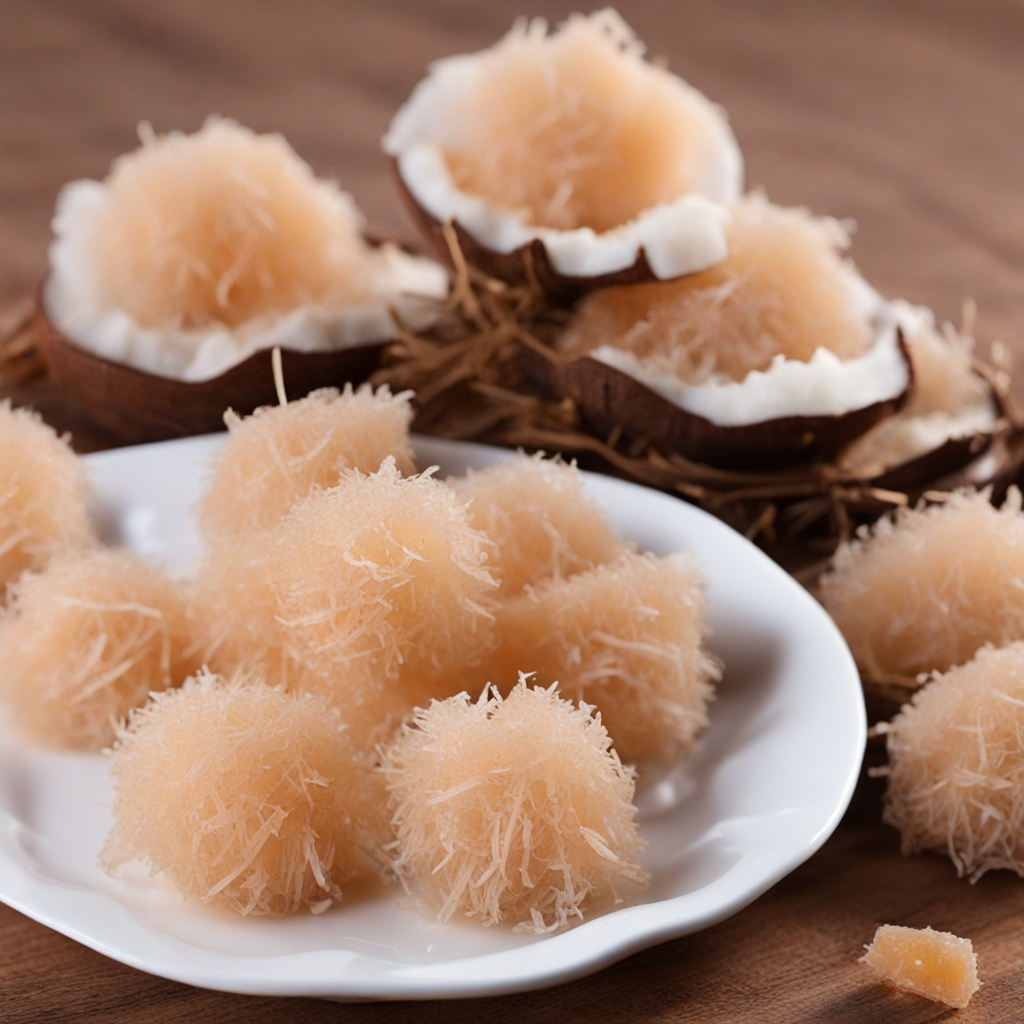Coconut Rice
Coconut Rice is a delightful dish that embodies the rich culinary traditions of Ghana, showcasing the tropical flavors that the country is renowned for. This dish is primarily made with long-grain rice, which is cooked in a creamy mixture of coconut milk, enhancing its natural nuttiness and providing a luscious texture. The infusion of coconut adds a subtle sweetness and a fragrant aroma, making every bite a tantalizing experience. Often, the rice is seasoned with a blend of spices that may include ginger, garlic, and a hint of salt, creating a perfect harmony of flavors that elevate the dish beyond a simple side. What sets Ghanaian Coconut Rice apart is its versatility and the way it complements a variety of main dishes. Traditionally, it is often served alongside stews, grilled meats, or vegetables, allowing the creamy rice to soak up the delicious sauces and juices. The rice also pairs beautifully with seafood, particularly fish, as the coconut flavor enhances the dish without overpowering the natural taste of the ocean. This makes it a popular choice for gatherings and celebrations, where it can be enjoyed in abundance with family and friends. The visual appeal of Coconut Rice is equally enticing, as the dish is typically garnished with fresh herbs or toasted coconut flakes, adding a contrasting texture and enhancing its aesthetic charm. When you take a forkful of this dish, you will experience the soft, fluffy rice intermingling with the rich coconut flavor, creating a comforting and satisfying meal. For those looking to explore new culinary horizons, Coconut Rice offers a unique taste of Ghana that is both comforting and exotic, making it a must-try for any food lover.
How It Became This Dish
The Rich Tapestry of Coconut Rice in Ghana: A Culinary Journey #### Origins Coconut rice, a dish that marries the fragrant, earthy flavors of rice with the creamy, tropical essence of coconut, has its roots deeply embedded in the rich agricultural landscape of Ghana. This West African nation, located along the Gulf of Guinea, boasts a climate conducive to the cultivation of a variety of crops, including rice and coconuts. While rice was introduced to the region through trade routes and colonial influences, coconuts are native to the coastal areas of Ghana, where they thrive in sandy soils and warm temperatures. The introduction of rice to Ghana is often traced back to the 15th century when the Portuguese and other European traders brought the grain from Asia. The local people quickly adapted rice cultivation methods, integrating it into their agricultural practices. Over the centuries, as rice became a staple in Ghanaian diets, the local cuisine began to evolve, leading to the creation of dishes that highlight the unique ingredients available in the region, including coconut. #### Cultural Significance Coconut rice is more than just a dish; it is a symbol of Ghanaian hospitality and communal dining. Traditionally prepared for special occasions such as weddings, festivals, and family gatherings, this dish brings people together, fostering a sense of community and shared cultural identity. In Ghanaian culture, food is often a medium for storytelling, and coconut rice is no exception. The dish’s preparation can involve entire families, with each member contributing to the process, from harvesting coconuts to cooking the rice. Coconuts themselves hold significant cultural importance in Ghana. Beyond their culinary uses, they are often associated with spiritual practices, symbolizing fertility and prosperity. The coconut tree is also referred to as the "Tree of Life," as it provides not just food but also materials for various crafts and construction. In many coastal communities, the coconut is an essential part of daily life, and its presence in coconut rice honors this connection. #### Development Over Time As Ghanaian society has evolved, so too has the dish of coconut rice. In traditional preparations, the rice is cooked in a mixture of coconut milk and water, absorbing the rich flavors of the coconut. Oftentimes, it is seasoned with spices such as ginger, garlic, and onions, enhancing its aroma and taste. Some variations incorporate additional ingredients like vegetables, fish, or meats, showcasing the versatility of the dish. The 20th century marked a period of significant change in Ghana, with urbanization and globalization influencing culinary practices. As people migrated to cities for work and education, new cooking methods and ingredients found their way into homes and restaurants. Coconut rice adapted to these changes, embracing new flavors and techniques while retaining its traditional roots. Chefs began experimenting with the dish, introducing elements from other cuisines, such as using spices common in Indian or Caribbean cooking. The rise of the internet and social media in the 21st century has further transformed the way coconut rice is perceived and prepared. Food blogs, cooking shows, and social media platforms have made it easier for chefs and home cooks to share their interpretations of coconut rice, leading to a renaissance of interest in traditional Ghanaian dishes. This has resulted in a fusion of flavors, where coconut rice might be served alongside curries, grilled meats, or even as a base for contemporary salads. #### Modern Interpretations and Global Influence Today, coconut rice is celebrated not only in Ghana but also in the diaspora, where Ghanaians have settled across the globe. In countries like the United States, the United Kingdom, and Canada, coconut rice has found its place in multicultural culinary landscapes, often featured in African restaurants and food festivals. The dish serves as a culinary ambassador, introducing international audiences to the richness of Ghanaian cuisine. Innovative chefs have taken coconut rice to new heights, incorporating it into gourmet dishes that reflect contemporary culinary trends. For instance, coconut rice can now be seen served alongside grilled seafood, infused with exotic spices, or even as a base for sushi rolls that blend traditional Ghanaian flavors with Japanese techniques. This evolution highlights the adaptability of coconut rice and its ability to resonate with diverse palates. Moreover, the growing awareness of sustainable and local food practices has led to a resurgence in the appreciation for traditional ingredients like coconut and rice. As more people seek to understand the origins of their food and the stories behind it, coconut rice stands as a testament to the importance of local agriculture and the cultural significance of food in fostering community ties. #### Conclusion Coconut rice is a dish that encapsulates the essence of Ghanaian culture, history, and community. From its origins in the fertile lands of Ghana to its modern interpretations around the globe, coconut rice tells a story of adaptation, resilience, and celebration. As it continues to evolve, this beloved dish remains a significant part of Ghanaian culinary heritage, inviting generations to gather around the table and share in the rich flavors and stories it brings. Whether enjoyed in a bustling city or a quiet coastal village, coconut rice will always be a cherished symbol of home and hospitality in Ghana and beyond.
You may like
Discover local flavors from Ghana







